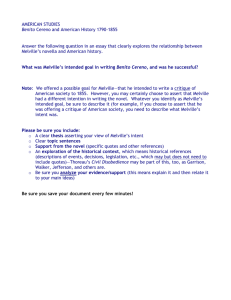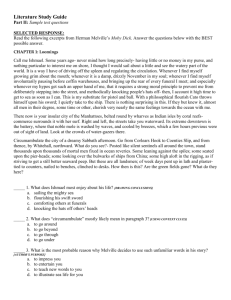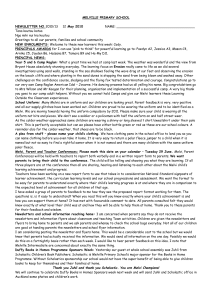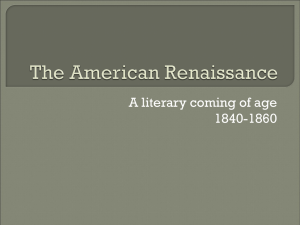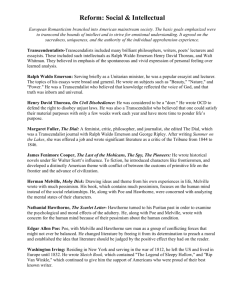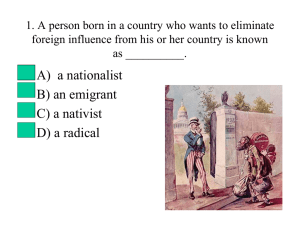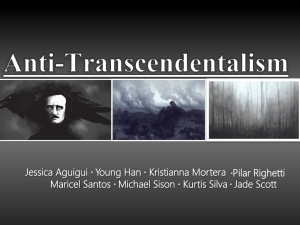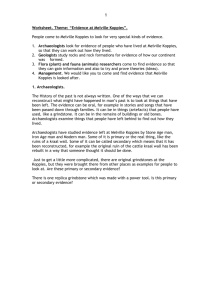Herman Melville - Biography
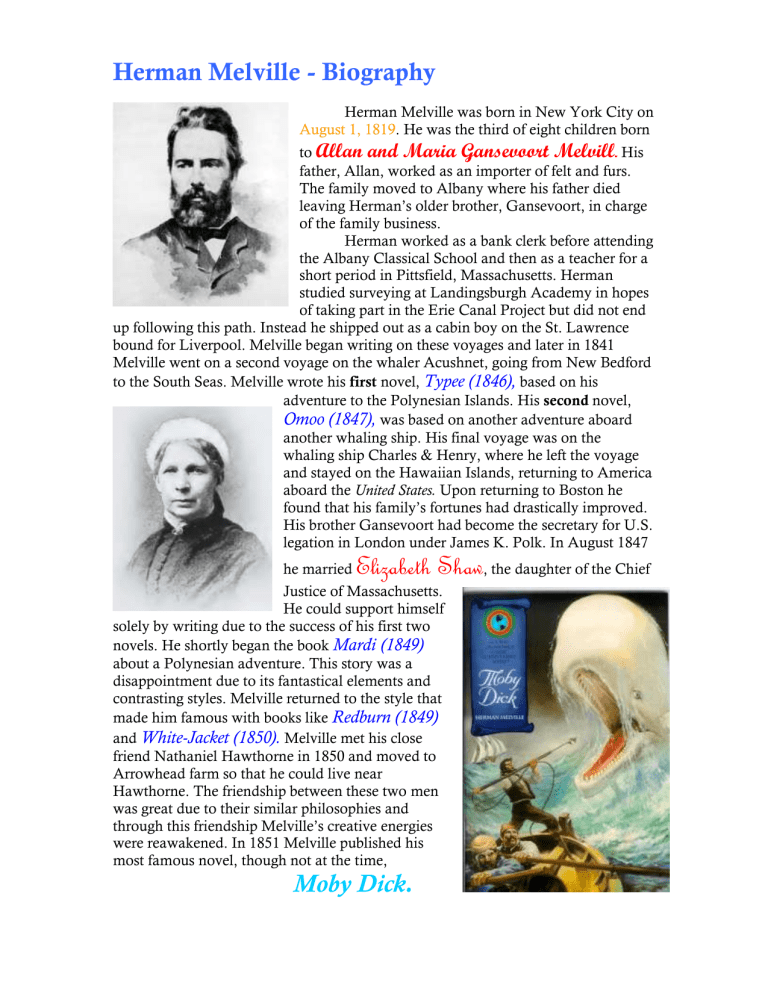
Herman Melville - Biography
Herman Melville was born in New York City on
August 1, 1819 . He was the third of eight children born to
Allan and Maria Gansevoort Melvill
.
His father, Allan, worked as an importer of felt and furs.
The family moved to Albany where his father died leaving Herman’s older brother, Gansevoort, in charge of the family business.
Herman worked as a bank clerk before attending the Albany Classical School and then as a teacher for a short period in Pittsfield, Massachusetts. Herman studied surveying at Landingsburgh Academy in hopes of taking part in the Erie Canal Project but did not end up following this path. Instead he shipped out as a cabin boy on the St. Lawrence bound for Liverpool. Melville began writing on these voyages and later in 1841
Melville went on a second voyage on the whaler Acushnet, going from New Bedford to the South Seas. Melville wrote his first novel,
Typee (1846),
based on his adventure to the Polynesian Islands. His second novel,
Omoo (1847),
was based on another adventure aboard another whaling ship. His final voyage was on the whaling ship Charles & Henry, where he left the voyage and stayed on the Hawaiian Islands, returning to America aboard the United States. Upon returning to Boston he found that his family’s fortunes had drastically improved.
His brother Gansevoort had become the secretary for U.S. legation in London under James K. Polk. In August 1847 he married
Elizabeth Shaw
, the daughter of the Chief
Justice of Massachusetts.
He could support himself solely by writing due to the success of his first two novels. He shortly began the book
Mardi (1849)
about a Polynesian adventure. This story was a disappointment due to its fantastical elements and contrasting styles. Melville returned to the style that made him famous with books like
Redburn (1849)
and
White-Jacket (1850).
Melville met his close friend Nathaniel Hawthorne in 1850 and moved to
Arrowhead farm so that he could live near
Hawthorne. The friendship between these two men was great due to their similar philosophies and through this friendship Melville’s creative energies were reawakened. In 1851 Melville published his most famous novel, though not at the time,
Moby Dick.
Melville so influenced by Hawthorne dedicated this work to him. However, this novel received little acclaim when is was released but now is considered an
American classic. Melville soon wrote
Pierre (1852)
drawing experiences from his youth. He also wrote
Israel Potter (1855).
These novels both were little successes, but his most significant works besides Moby
Dick were the short stories,
“Bartleby the Scrivener”
(1853)
and
“Benito Cereno” (1855)
. In 1856
Melville traveled to Europe and would in later write his last novel published during his lifetime
The Confidence
Man (1857).
After this novel Melville devoted himself to lecture tours and a voyage around the world. His final years were ones of person tragedy, his son Malcolm shot himself in 1867, and another son, Stanwix, died after a long illness in 1886. His finally novel was
Billy Budd
, about a sailor who kills his master, which was not published until 1924, 33 years after his death. Melville died on September 28, 1891 in New York City.
-------------------------------------------------------------------------------------------------------
BACKGROUND TO The Scarlet Letter
The Scarlet Letter was written in 1850 by
Nathaniel Hawthorne. This novel is set in
Boston during the 1640’s. In this work
Hawthorne criticizes the strict religious
Puritan way of life. It was written during the transcendentalist period which was a direct opposition to the Puritan lifestyle and beliefs. In connection to this, Herman
Melville was born into a Puritan family and was considered by his father to be an odd child who did not embody the Puritan lifestyle. This can make sense as to
Hawthorne’s views of the Puritans because
Melville was a very close friend of
Hawthorne.
"The Scarlet Letter: Background Info." Lit Charts. LitCharts, 2008-2010. Web. 20
Dec 2010. <http://www.litcharts.com/lit/thescarletletter/backgroundinfo>.
Merriman, C.D. "Herman Melville." The Literature Network. Jalic Inc., 2007. Web. 23
Dec 2010. <http://www.online-literature.com/melville/>.
